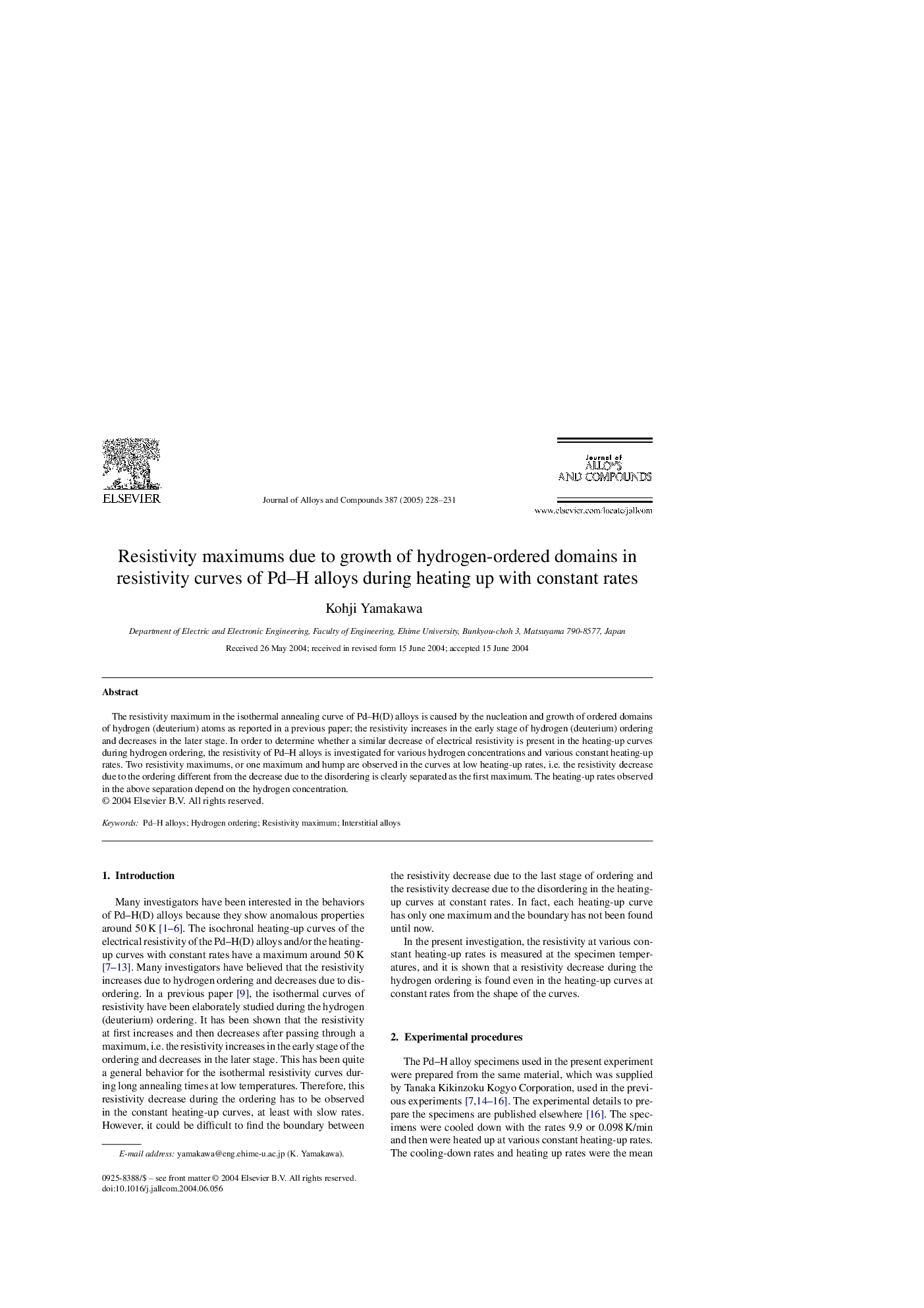| Article ID | Journal | Published Year | Pages | File Type |
|---|---|---|---|---|
| 9804167 | Journal of Alloys and Compounds | 2005 | 4 Pages |
Abstract
The resistivity maximum in the isothermal annealing curve of Pd-H(D) alloys is caused by the nucleation and growth of ordered domains of hydrogen (deuterium) atoms as reported in a previous paper; the resistivity increases in the early stage of hydrogen (deuterium) ordering and decreases in the later stage. In order to determine whether a similar decrease of electrical resistivity is present in the heating-up curves during hydrogen ordering, the resistivity of Pd-H alloys is investigated for various hydrogen concentrations and various constant heating-up rates. Two resistivity maximums, or one maximum and hump are observed in the curves at low heating-up rates, i.e. the resistivity decrease due to the ordering different from the decrease due to the disordering is clearly separated as the first maximum. The heating-up rates observed in the above separation depend on the hydrogen concentration.
Keywords
Related Topics
Physical Sciences and Engineering
Materials Science
Metals and Alloys
Authors
Kohji Yamakawa,
